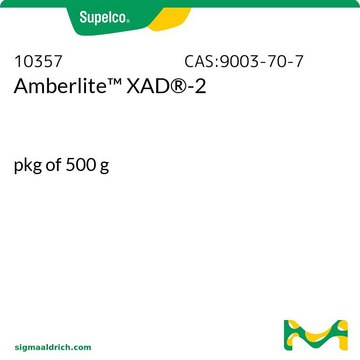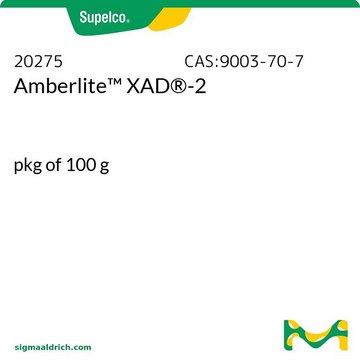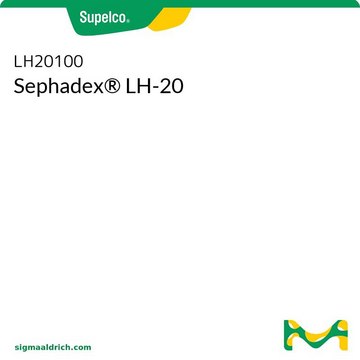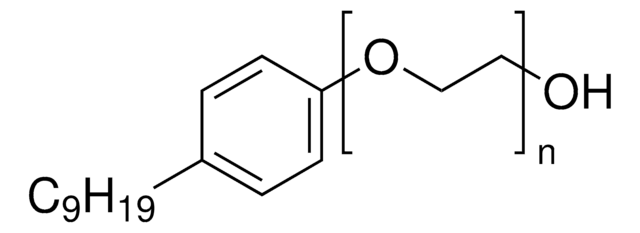Key Documents
XAD7
Amberlite™ XAD7HP polymeric adsorbent
20-60 mesh
Synonim(y):
weak anion exchange resin
About This Item
Polecane produkty
product name
Amberlite™ XAD7HP, 20-60 mesh
gęstość pary
<1 (vs air)
Poziom jakości
ciśnienie pary
17 mmHg ( 20 °C)
Postać
beads
temp. samozapłonu
800 °F
metody
LPLC: suitable
powierzchnia
380 m2/g
macierz
acrylic
grupa aktywna macierzy
polymer
wielkość cząstki
20-60 mesh
560-710 μm
wielkość porów
0.5 mL/g pore volume
300-400 Å mean pore size
metoda separacji
reversed phase
Szukasz podobnych produktów? Odwiedź Przewodnik dotyczący porównywania produktów
Opis ogólny
Zastosowanie
Inne uwagi
Mesh 20-60 is Cat. No. XAD7
Mesh 20-50 is Cat. No. 06445
Informacje prawne
Kod klasy składowania
11 - Combustible Solids
Klasa zagrożenia wodnego (WGK)
WGK 3
Temperatura zapłonu (°F)
Not applicable
Temperatura zapłonu (°C)
Not applicable
Środki ochrony indywidualnej
Eyeshields, Gloves, type N95 (US)
Certyfikaty analizy (CoA)
Poszukaj Certyfikaty analizy (CoA), wpisując numer partii/serii produktów. Numery serii i partii można znaleźć na etykiecie produktu po słowach „seria” lub „partia”.
Masz już ten produkt?
Dokumenty związane z niedawno zakupionymi produktami zostały zamieszczone w Bibliotece dokumentów.
Nasz zespół naukowców ma doświadczenie we wszystkich obszarach badań, w tym w naukach przyrodniczych, materiałoznawstwie, syntezie chemicznej, chromatografii, analityce i wielu innych dziedzinach.
Skontaktuj się z zespołem ds. pomocy technicznej








